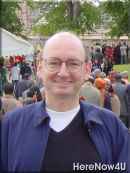
Centre of Jaina Studies Newsletter: SOAS - University of London
Research in Jainism has a long tradition at the School of Oriental and African Studies (SOAS) at the University of London. It is associated with eminent Ind- ologists such as Sir Ralph Turner, John Brough, Arthur Llewellyn Basham, Duncan Derrett, Padmanabh S. Jaini, Robert Williams, John Gray and J. Clifford Wright, who during their spells at SOAS published extensively in the field of Jaina Studies. Yet, until recently, Jainism was never taught at SOAS nor anywhere else outside India. Interested students had to turn to general courses on Indic religions or advanced classes in Sanskrit, Prakrit, Hindi or Gujarati to gain a glimpse of the rich Jain cultural heritage. This unsatisfactory situation began to be redressed in 1999 when Jaina Studies was launched as an independent field of inquiry in the newly formed Department of the Study of Religions. The initiative was inspired by the late Dr Julia Leslie (1948-2004) and rendered viable through seed funding from the Jain Academy for the teaching of two courses on Jainism. For some time, Julia Leslie had invited visiting samanīs and samans (neophyte Terāpanth Jain nuns and monks) to give guest lectures to her classes on Hinduism (sic) and nurtured relationships with the growing Jain communities in London.
At the time, Jaina Studies were still in the early stages of their transformation from a purely philological and archaeological endeavour to the multidisciplinary exploration of a lived religious tradition, which it is now. The changes were triggered by a series of field studies in the 1980s and 1990s, which contributed not only to Indology and comparative religion, but also to anthropology, art history, history, linguistics, and to cross-disciplinary fields such as gender studies and diaspora studies. The new focus on contemporary Jainism also injected a breath of fresh air into a then stagnant and inaccessible academic sub-discipline, Jainology and Prakrit studies, and attracted a new generation of students to the then largely unexplored but now rapidly developing multidis- ciplinary field of Jaina studies.
Scholars at the University of Cambridge played a central role in these new developments, together with their counterparts at the CNRS in Paris and the Divinity School at Harvard. Despite the brilliance of their pioneering research, these efforts had no lasting structural effects on the field as a whole, which remains fragmented and discontinuous due to the lack of an institutional base.
From 1999 onwards, SOAS took the lead in the field through infrastructural innovations that culminated in the establishment of the Centre of Jaina Studies (CoJS) in 2004. This centre offers, for the first time, the prospect of a stable anchor and forum for the global network of Jain scholars collaboratively to develop Jaina Studies as an independent interdisciplinary field of inquiry. The initiatives were financed almost entirely through successful bids for competitive research grants, notably a project funded by the Arts and Humanities Research
Board (AHRB) on Jaina law and the Jaina community in India and Britain. This reflects not only the quality of the applications but also the growing academic and public interest in Jainism, which is one of the least studied of the ancient Indian religions.
Highly specialised fields in the arts and humanities such as Jaina Studies can survive in the current economic climate only if previously isolated researchers create regional and global networks to strengthen their voice and to bid collaboratively for research funds. At present, SOAS is the best placed institution, maybe the only one outside India, which can turn this strategic necessity into reality without further infrastructural investments.
This fact is widely recognised both in academic circles and within the global Jain community. Within a short period of time SOAS became one of the most important venues for Jaina studies in the world. It already functions as a central node for multiple collaborations with scholars in Britain and North America and within the European Network of Jaina Studies, which was established at SOAS in November 2004, with the Society for Jaina Studies in Kyoto and a great number of Universities and Jain research centres in India, such as the American Institute of Indian Studies in Gurgaon, the Jain Vishva Bharti Institute in Ladnun, the P. V. Institute in Varanasi, the B.L. Institute in Delhi, and the L.D. Institute in Ahmedabad. Jain scholars and members of the general public with an interest in Jainism from all over the world drift naturally towards SOAS as a gateway to the unique and vast resources in the museums, archives and libraries of London.
Yet, the recent successes of SOAS in the field of Jaina studies would not have been possible without the local presence and the global connections of the London Jain community, which is the largest outside India and strongly supportive of the Centre of Jaina Studies. It is a paradigmatic example of how links between academic institutions and religious communities can stimulate interest in the study and research of small but significant academic fields of study that are endangered by changing policies of government funding.
The main meeting point and public focus of the activities of the CoJS are the Annual Jain Lecture and the Jaina Studies Workshops in March, which are popular with both academics and the public, including members of the Jain community, which have the opportunity to keep themselves informed about the latest advances in Jaina Studies, to share Jain food and to exchange views with leading scholars in the field. The interaction with the Jain community at the annual meetings is also one of the main attractions for Jain scholars, who are interested in making their work known to a wider audience. Together, the global network of Jain scholars and the Jain community will have a great future at SOAS.
Excerpt from: "Jaina Studies." SOAS: A Celebration in Many Voices. General Editor: Catrine Clay. Assistant Editors: Hugh Baker & Charles Tripp, 68-69. London: Third Millennium Publishing.
 Dr. Peter Flügel
Dr. Peter Flügel